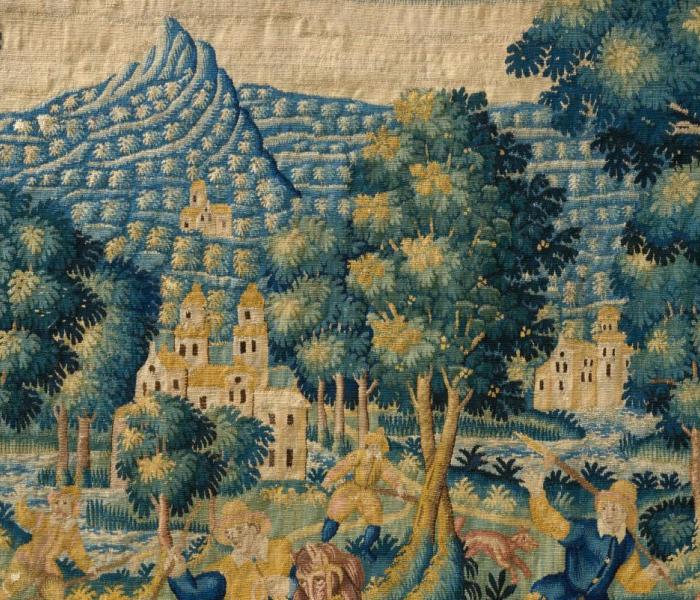Tapestries
MOU reveals Oudenaarde’s rich history. From the 15th century to the 18th, the city along the river Scheldt created a furor in tapestry art. Especially in the 16th century, when production and worldwide export of this luxury product flourished like never before.
A touch of chauvinism is by no means unwarranted. The quality of Oudenaarde tapestry shows extraordinary craftsmanship. This notable product is identified by a unique mark. The specialty of the region, known as “verdures” or green tapestries, are widely renowned.
Did you know? Emperor Charles V was known not only as the ruler of the empire where the sun never set, but also as a fervent lover of tapestries. The Oudenaarde weavers’ mark with Oudenaarde’s coat of arms and distinctive spectacles came about thanks to an official order from the emperor himself. A quality label before its time.
The museum is steadily expanding its own collection of tapestries. In 2023, the board brought home another lost treasure. A historical scene from the series The History of Alexander, of which MOU already owns 4 tapestries. The work was auctioned in France and is now on display in the museum. The city of Flemish tapestry proudly portrays its glorious past, now and in the future.
Genres in tapestry
Throughout the entire period of tapestry production, there are roughly two main genres that naturally evolve over the decades in terms of approach and style: decorative and figurative tapestries.
Decorative tapestry series, to put it negatively, do not tell a story. You see plants (in specialist terms, “greenwork,” “verdure,” “bosschage” or “feuillage”), real and mythological animals, and decoration in unusual shapes (in specialist terms: “grotesques”). Verdures are technically the easiest to make, and the genre lends itself well to standardized mass production. These tapestries find their customers in the highest circles.
Figurative tapestry series depict stories with characters. These are primarily episodes from the Old Testament, but also from Greco-Roman mythology and history.
There are also intermediate forms: decorative tapestries with lots of greenery, combined with the depiction of a story with characters. Many weavers in Oudenaarde and other production centers supplied both genres.



